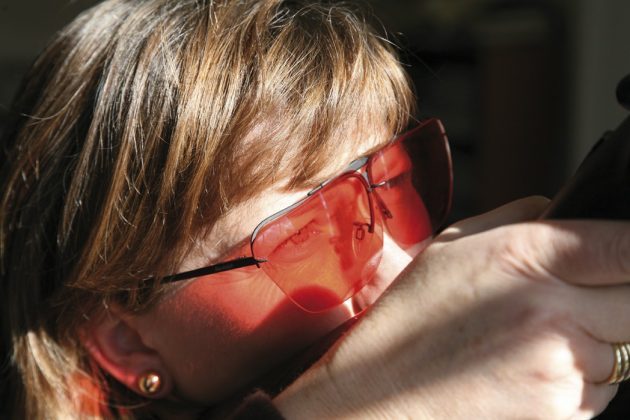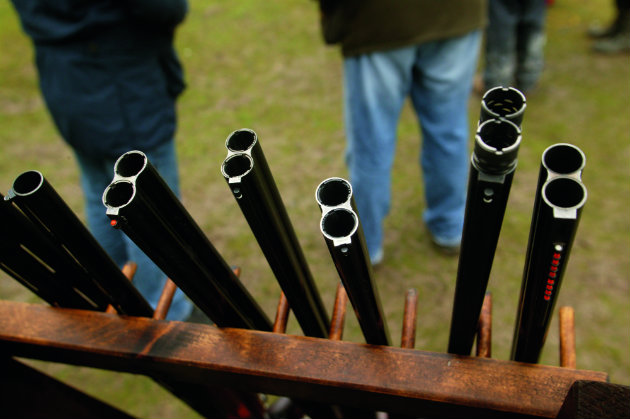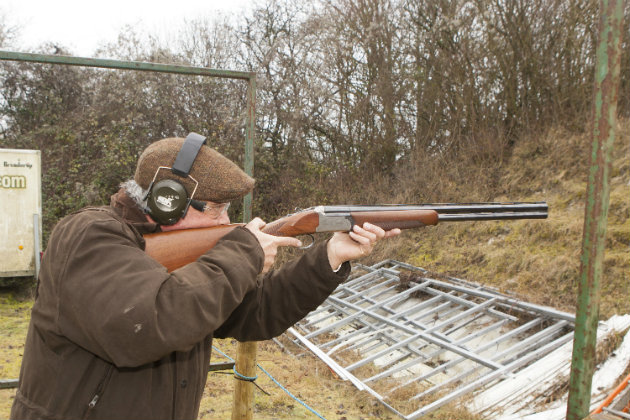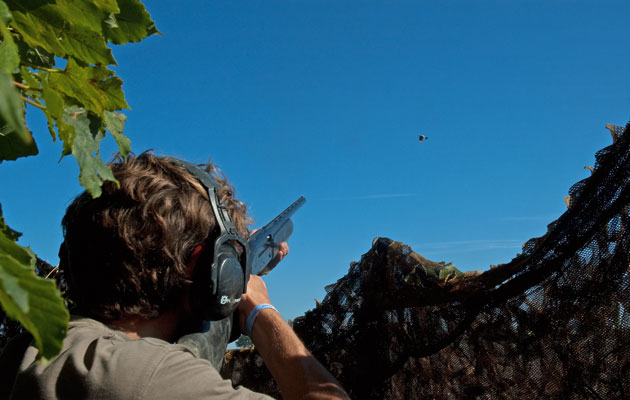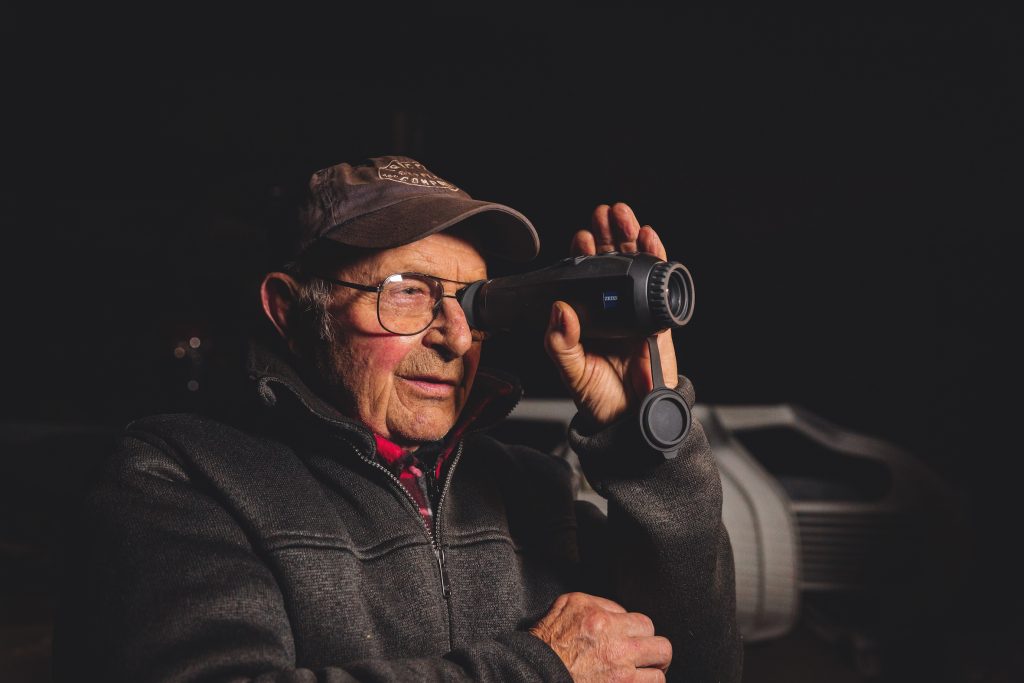I’ve never been able to make up my mind on what’s the right amount of choke to have in a gun.…
Win CENS ProFlex DX5 earplugs worth £1,149 – enter here
Gun fit, chokes, coloured glasses and lead – some readers’ recent shooting questions
<em>Sporting Gun's</em> shooting coach dips into his mailbag to sort out some more readers' enquiries.
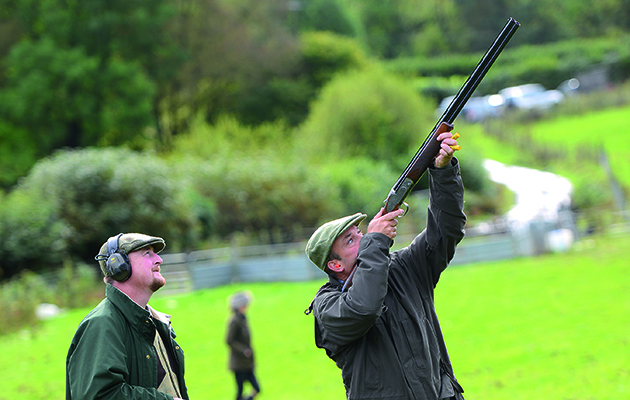
Q: How important is gun fit?
A: A gun that fits you properly will obviously help maximise your scores. If the gun isn’t pointing where you’re looking you’re always going to struggle to hit targets consistently. That said, if you don’t mount the gun in exactly the same manner, every time, the positive effect of a properly fitted gun is diminished.
The best advice I can offer concerning gun fit is to take your gun along to a good gunsmith. He, or she, will be able to tell you almost instantly whether there are major problems with the fit and how it can be altered and rectified.
Over the years my experience can tell me when a specific gun is simply wrong for the shooter. The stock’s miles too short or long, for instance, but I reckon the finer points and recommendations should be left to a competent gunsmith.
Q: Why do some people wear coloured sunglasses when shooting?
A: Quite rightly most shooting grounds insist that eye protection, along with ear defenders, must be worn when shooting. Incidentally, it’s rarely falling shot, but fragments of broken clays that cause problems.
Some people prefer clear lenses, others swear by red lenses, (they say that the increase in contrast makes it easier to see the target) especially when they’re shooting in really bright sunlight or attempting bright orange/red targets against a dark background.
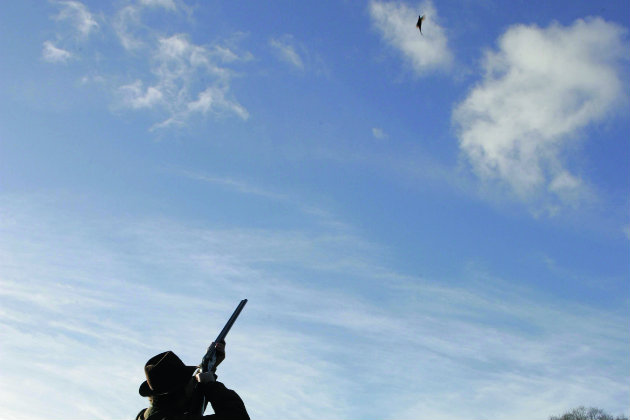
Rather than obsessing over lead, you should make sure you understand the reason you stop your gun
Q: Is there an easy way to assess how much lead you need to give a target?
A: In a word, no. Experience and a good mental library of ‘sight pictures’ for a variety of different types of target is what will count when you want to improve your scores. You can’t buy that experience so all I can suggest is maybe have a couple of lessons to brush up on your technique and shoot loads of cartridges!
On a more specific note, always remember that the angle of lead will never change – irrespective of the distance of the target from the shooter. This is what confuses a lot of novices. Sure, your experience and sight pictures will ultimately tell you what that angle needs to be, but it will never change.
I’m a firm believer in shooting instinctively; let your brain make all the subliminal calculations for you. If someone chucks you a ball to catch – high and crossing – you don’t need to work out how high or to one side you need to jump to make sure the ball ends up in your hand. Instinct takes over and you do it all naturally. In my view shooting can be just the same.
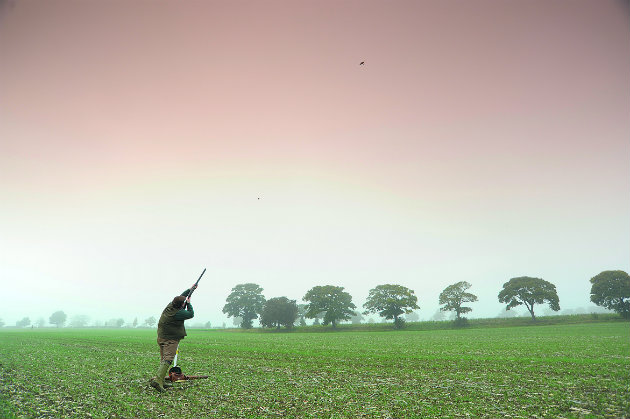
You have to find the right combination of cartridge and choke for your chosen quarry
Q: Why is shot in a ‘stream’ or ‘string’ and how do chokes affect my shooting?
A: The best analogy is to think of a hosepipe. Turn the tap on and the water will flow out – but it won’t go very far (open choke). Pinch the end of the pipe, however, and the water is concentrated and sprays further (tight choke). In exactly the same way, a tight choke of, say, full or three-quarter will give you tight shot pattern at a distance, whereas a more open choke will deliver a good open spread of shot, but closer to the gun.
Shot will always travel in a string, or stream, but how the gun is choked will affect the length of this stream. Remembering the hosepipe principle, an open choke will throw a broad pattern, but the length of the string will be relatively small, whereas the tight choke will keep the pattern smaller but the length of the string is far greater.
In theory, assuming you’re shooting ahead of the target, using the tighter choked barrel should give you more chance of hitting a bird that’s a fair distance away – simply because the clay has more chance of colliding with the longer shot string.
At the end of the day my advice is not to be too concerned about chokes and shot strings. Stick to one gun, cartridge, choke combination and concentrate on your technique.
Q: How do you shoot a teal target when it’s on its way down?
A: Quite simply, you don’t – unless it’s a second-barrel shot because you missed it on the way up! Always try and kill this target when it’s ‘under power’ and going up. At worst take it at the very top of its flight when it reaches its apex.
As the bird drops it will gradually accelerate, getting faster all the time. As such, your swing will have to accelerate to keep in pace and ahead of the target. Make sure the muzzles stay on the line of the clay, watch it closely and be ready to compensate if it drifts off to one side because of a side wind. The trick is to shoot well below the bird and keep the gun moving well after you pull the trigger.
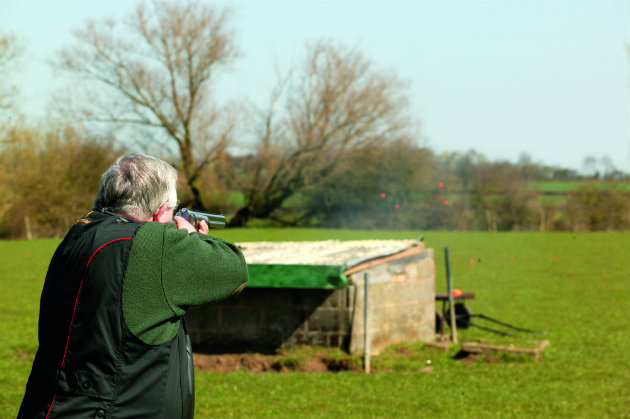
Before you go roughshooting, get in some practice on the down-the-line trap at the clay ground
Q: Why are going away, DTL type targets, generally easier than others?
A: Shooting this type of target is easy if you’ve got the basics right: stance, gun mount and swing. If all these come as second nature to the shooter, your scores should be incredibly high. In fact, the swing is the tricky part and, because of the type of clay presented, that’s minimal anyway.
A good tip, and a general starting point is to rely on the way the shot travels from the gun. Generally, most sporting guns will fire a pattern 60% above the bead, 40%underneath. It goes without saying that if a shooter swings the gun and pulls the trigger when the bird sits on top of the bead the result should be a smashed clay. Don’t rush. Get the basics right and this stand will really help improve your overall score on a sporting layout.
Q: Why can’t I see the shot from a gun?
A: It is possible to see shot against the sky, but it’s not an exact science. First rule is to stand behind a shooter looking over – and beyond – his gun muzzles, letting your eyes go into something of a soft focus around the actual target, but not on it.
What you are looking for is not the sight of individual pellets but an indistinct ‘smudge’ measuring maybe a foot or two across that flickers into view briefly, then disappears. It’s a disturbance that lasts only a second – long enough though to determine where the target was missed.
Needless to say you won’t see the shot if the target is hit.
Best advice I can give is not get too low to a shooter’s shoulder when looking down the gun because gasses from the muzzle when a cartridge is fired will block the ‘flicker’ from view.
That aside, by looking above the gun, most instructors are able to keep its rib in peripheral view as well as its general alignment with the target, so even if they don’t actually ‘see’ the shot, they are still able to tell where a shooter missed.
Related Articles
Get the latest news delivered direct to your door
Subscribe to Shooting Times & Country
Discover the ultimate companion for field sports enthusiasts with Shooting Times & Country Magazine, the UK’s leading weekly publication that has been at the forefront of shooting culture since 1882. Subscribers gain access to expert tips, comprehensive gear reviews, seasonal advice and a vibrant community of like-minded shooters.
Save on shop price when you subscribe with weekly issues featuring in-depth articles on gundog training, exclusive member offers and access to the digital back issue library. A Shooting Times & Country subscription is more than a magazine, don’t just read about the countryside; immerse yourself in its most authoritative and engaging publication.






